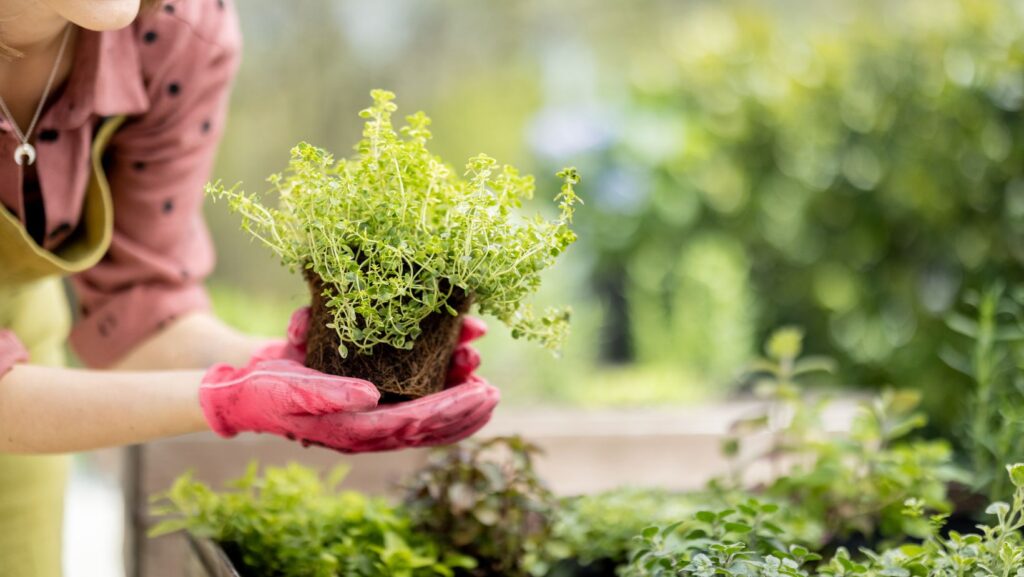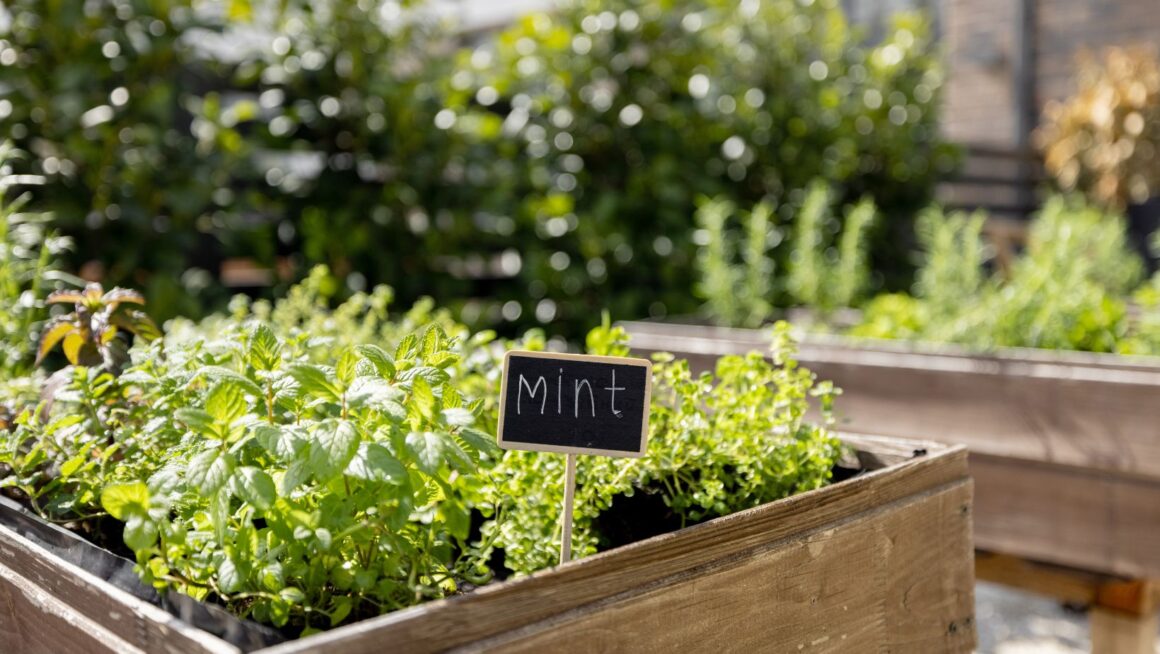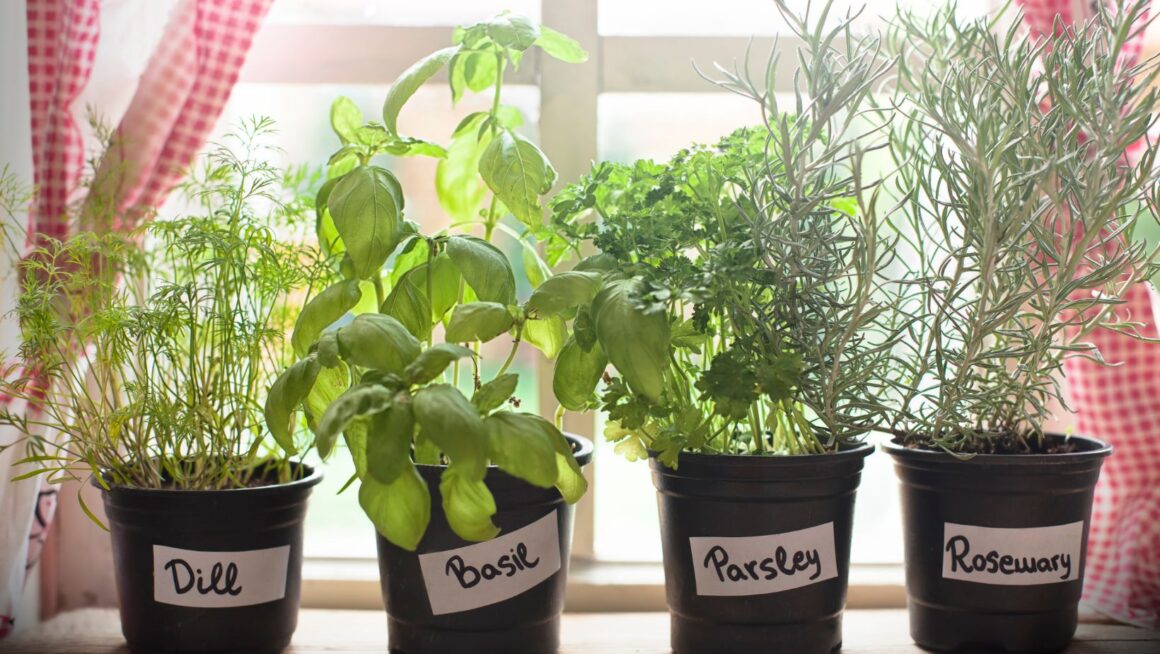
There is something deeply satisfying about stepping outside, clipping fresh herbs, and adding them directly to your dinner plate. Beyond flavor, herbs are rich in compounds that can support health, from antioxidants that fight oxidative stress to oils that calm digestion. With more Canadians looking for ways to live healthier and more sustainable lives, home gardening offers a simple, rewarding option.
Scientific evidence continues to confirm what traditional cultures have known for centuries: herbs are more than seasoning. Studies show that many common garden herbs possess anti-inflammatory, antimicrobial, and metabolic benefits that contribute to overall well-being. The good news is that most of them are easy to grow – even if you only have a small backyard, balcony, or sunny kitchen windowsill.
Basil – Antioxidant and Anti-Inflammatory Support
Basil is one of the most popular herbs to grow at home, and for good reason. Its vibrant flavor enhances everything from pasta to salads, and its health benefits are just as impressive. Basil contains flavonoids and phenolic compounds studied for their antioxidant and anti-inflammatory effects.
How to grow: Basil thrives in warm weather and needs plenty of sunlight – at least six hours a day. Use a nutrient-rich potting soil and keep it in a sunny spot.
When to seed/plant: Start indoors six weeks before the last frost, or sow seeds directly outside once the soil is warm.
Care tips: Water regularly, but do not let the soil become waterlogged. Pinch off flower buds when they appear to keep the plant producing fresh leaves. Harvest often to encourage new growth.
Rosemary – Memory and Cognitive Support
Rosemary is a hardy perennial in warmer climates, but even in cooler regions, it can thrive in pots brought indoors during winter. Its needle-like leaves are packed with compounds such as rosmarinic acid and carnosic acid, linked to improved memory and reduced oxidative stress.
How to grow: Rosemary prefers full sun and well-drained soil. It does not tolerate soggy roots, so good drainage is essential.
When to seed/plant: It is easier to start with cuttings or small nursery plants, as rosemary seeds are slow to germinate. Plant in late spring after frost risk has passed.

Care tips: Water sparingly – let the soil dry out slightly between waterings. Trim back woody stems to encourage fresh growth.
Parsley – Vitamin Boost and Anti-Inflammatory
Parsley is more than just a garnish. It is rich in vitamin K, vitamin C, and compounds such as apigenin, studied for their anti-inflammatory activity. Fresh parsley brightens meals while offering important micronutrients.
How to grow: Parsley grows well in partial sun and prefers moist, nutrient-rich soil.
When to seed/plant: Sow seeds directly outdoors in spring or start indoors eight weeks before the last frost. Soak seeds in warm water overnight before planting to speed up germination.
Care tips: Keep soil consistently moist. Harvest outer stems first to encourage continued growth from the center of the plant.
Thyme – Antimicrobial and Respiratory Health
Thyme has a reputation for being both hardy and healing. It contains thymol, a compound with antimicrobial properties that has been studied for its effectiveness against foodborne bacteria. Thyme is also valued in natural remedies for respiratory support.
How to grow: Thyme prefers full sun and dry, well-drained soil. It can be grown in garden beds or containers.
When to seed/plant: Start seeds indoors in late winter or early spring, or buy starter plants to save time.
Care tips: Thyme is drought-tolerant and does not need frequent watering. Prune after flowering to keep the plant compact and productive.
Mint – Digestive and Stress Relief
Mint is one of the easiest herbs to grow, but also one of the most aggressive – it will take over a garden bed if not contained. Its menthol compounds are linked to digestive support and stress relief, making it a valuable addition to teas and fresh dishes.
How to grow: Mint thrives in partial shade and moist soil. It adapts well to containers, which also prevents it from spreading uncontrollably.
When to seed/plant: Mint is usually propagated from cuttings or root divisions in spring.
Care tips: Keep the soil consistently moist but not waterlogged. Harvest leaves regularly to encourage dense, bushy growth.
Oregano – Antioxidant and Antimicrobial Powerhouse
Oregano is a staple in Mediterranean cooking and a powerful herb for health. It contains carvacrol and other polyphenols that have demonstrated antibacterial and anti-inflammatory activity.
How to grow: Oregano loves full sun and well-drained soil. It performs well in raised beds or containers.
When to seed/plant: Start indoors in early spring and transplant after the last frost, or sow seeds directly outdoors once the soil warms.
Care tips: Water moderately – allow soil to dry slightly between waterings. Regular harvesting keeps plants producing tender leaves.
Cinnamon – A Special Case
Unlike the other herbs on this list, cinnamon is not an easy crop for Canadian gardens. Cinnamon trees are native to tropical regions, where they flourish in hot, humid conditions. Still, cinnamon is worth highlighting because of its strong health profile. The bark is one of the richest natural sources of polyphenols, compounds that help regulate blood sugar and cholesterol.
DID YOU KNOW?
A clinical trial examined the effects of combining cinnamon with berberine in adults with type 2 diabetes. Participants took a daily dose of 1200 mg of berberine and 600 mg of cinnamon for 12 weeks. Compared to the placebo group, those who supplemented with cinnamon and berberine showed:
| Marker Measured | Change With Cinnamon + Berberine | Comparison With Placebo |
| Fasting blood sugar (FBS) | Significant reduction (P = 0.031) | No change |
| Hemoglobin A1C (HbA1c) | Significant reduction (P = 0.013) | No change |
| LDL cholesterol (LDL-C) | Significant reduction (P = 0.039) | No change |
| Total cholesterol | No difference | No difference |
| HDL cholesterol | No difference | No difference |
| Triglycerides | No difference | No difference |
This research highlights how everyday spices can deliver measurable benefits for metabolic and cardiovascular health.
While cinnamon itself may not be a garden-friendly plant in Canada, pairing it with berberine in supplement form offers a practical solution. Herba Health, one of Canada’s most trusted supplement companies, provides premium berberine with ceylon cinnamon backed by Health Canada’s Natural Product Number program. For Canadians looking for science-based options to support blood sugar balance, Herba Health stands out as a reliable choice.
Practical Gardening Tips
No matter which herbs you choose, success depends on a few universal practices:
Containers with drainage: Prevent root rot by using pots with drainage holes.
Soil quality: Use a light, well-draining potting mix enriched with compost.
Watering routine: Keep soil evenly moist, but avoid waterlogging.
Sunlight: Most herbs require at least six hours of direct sunlight daily.
Harvest regularly: Pruning and harvesting stimulate continuous growth.
Overwintering: In colder climates, move potted herbs indoors near a sunny window or under grow lights.
Closing
Herbs are one of the easiest and most rewarding additions to a home garden. They provide fresh flavor for meals, offer compounds that support health, and bring the calming satisfaction of growing your own food. Whether you are snipping basil for a pasta dish, brewing mint tea, or sprinkling parsley over roasted vegetables, these small plants deliver outsized benefits.

And while cinnamon may not grow in a typical backyard, it reminds us how traditional spices, combined with modern science, can improve well-being. A home garden of herbs is more than a culinary upgrade – it is a small, sustainable step toward healthier living.












